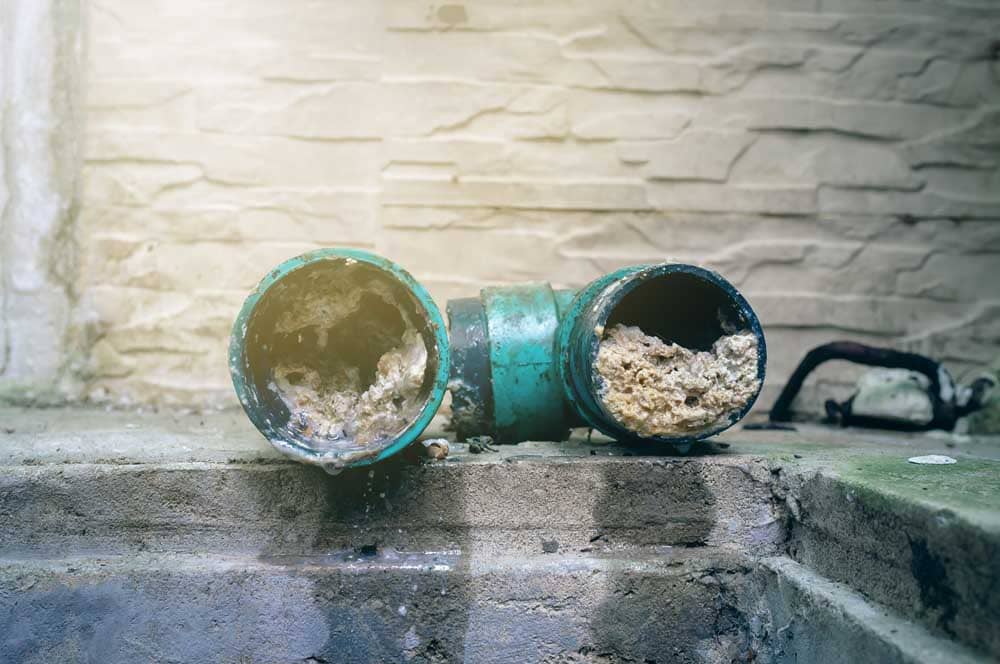How does a grease trap work and are they worth investing in?
Google the phrase “fatberg” and you’ll see why not washing fat and grease down the drain is important. Fats congeal when they cool, creating a gooey, sticky but basically solid mass. Things get stuck to them and create blockages which are truly, genuinely revolting. When they occur, a local restaurant is usually the most likely culprit. This can lead to hefty fines and everyone questioning your reputation.
The same principle happens in the drain pipes leading away from your sinks. Washing grease down there will eventually cause blockages and, trust us, it’s not a nice job to clean them out. Luckily, grease traps exist precisely to avoid these problems happening.
What is a Grease Trap?
A grease trap, also known as a grease interceptor, is designed to capture cooking fats, oils, and grease from wastewater before they enter the sewer system.
They’re generally worth considering in commercial kitchens like restaurants and cafeterias, but are generally overkill for a domestic setting. Whereas a professional kitchen will be dealing with lots and lots of grease, an average home is probably better off just using paper towels and binning it.
They work by diverting greasy water through a series of baffles and a retention area, catching it before it gets near the drain. We’ll get into the mechanics in a moment.
Why is a Grease Trap Necessary?
As we said, there’s generally not much point in installing a sink grease trap in the average home. We simply don’t produce enough waste grease for it to be necessary. The same can’t be said for restaurants and other commercial ventures though.
In high-grease kitchens, a grease trap or interceptor can be an invaluable tool. Not only will they protect your plumbing system from clogs and backups caused by solidified grease, they can help avoid hefty fines from the local environmental health agency.
It’s likely that your local area will have strict rules in place for dealing with fats, oils and grease (FOGs). These protect the municipal sewers from the formation of fatbergs and aim to improve public health. It might well be required that any commercial kitchen installs one on each sink.
Not only will a properly installed restaurant grease trap save you on fines from the officials, they can keep your repair bills down too. Clogs can knock a sink out of action entirely, and if you can’t wash up, you can’t serve.
The Anatomy Of a Grease Trap
To answer the question of how does a grease trap work, we need to take a look inside the box. Here we’ll find the following components:
- Inlet pipe: as the name suggests, this is where greasy water enters the system.
- Baffles: these slow the water flow, allowing grease and fats to rise and debris to fall
- Grease retention area: this is where the grease is caught, separating it from the water
- Outlet pipe: the now grease-free water is allowed to drain away as normal.
Broken down like this, it’s easy to see how these simple traps work, but let’s go further.
How Does A Grease Trap Work?
If you’re wondering, “how does a grease trap work,” wonder no longer. There are four stages:
1. Flow into the trap.
Greasy, debris-laden water is washed down the sink into the trap. When you consider how many pots, pans and plates a busy restaurant might use in a day, you get an idea of just how much grease and debris this might be.
2. Separation by density.
The baffles slow down the water, allowing the bits of food to settle at the bottom and the congealing grease to rise to the top. This allows them to be separated out, reducing the risk of clogs forming further down the line.
3. Retention
The grease is caught in the trap. This is concentrated in the retention area which can be cleaned out, removing the grease from the plumbing entirely.
4. Discharge
The now relatively clean water is allowed to escape from the trap, flowing harmlessly down the drain. The result is no clogs, no fatbergs forming and no angry visits from the local health department about the costs of cleaning the sewers around your establishment.
Generally, the trap should be cleaned out every 1-3 months, depending on how much grease the kitchen is producing. They’re considered ‘full’ when they’re 25% filled with FOGs and will need somewhere between 45 minutes and 3 hours to clean out.
Types Of Grease Trap
While the basic mechanics of a grease trap remain the same, there are multiple permutations on the design. Each brings its own quirks.
Passive Grease traps
Passive grease traps are by far the most common. They’re installed under sinks or further down a plumbing line. They work without intervention until it’s time to clean them out.
They’re cheap to install and relatively low maintenance. They will require cleaning every 1-3 months, depending on the load and they may struggle with particularly large levels of grease.
Automatic Grease Removal Units (AGRUs)
These are a bit more advanced and, as you might guess from the name, remove grease mechanically, skimming it from the surface of the water.
They cost a good bit more and, as a mechanical system, are susceptible to breakdowns. They can deal with more grease than passive under-sink units but will require more maintenance.
Gravity Grease Interceptors
The largest systems are usually located outside the building. These are for really high capacity use, such as in factory settings.
They cost a lot more than other options, both in terms of buying and installing the unit and maintaining it. However, they are incredibly efficient and able to deal with the heaviest loads of grease.
Maintaining and Cleaning of a Grease Trap
Now that we’ve answered the question of how does a grease trap work, the next logical step is to answer how to keep it working. Avoiding clogs, foul odors and health code violations should be the next priority on any commercial kitchen owner.
Signs You Need To Clean Your Trap
Your trap will let you know when it’s time to clean it out through signs like:
- Slow drainage
- Bad smells
- Visible grease build up
How often this needs to be done will vary from kitchen to kitchen. Lower amounts of grease will mean less frequent cleaning, but a good rule of thumb is that you’ll need to clean it out once every 1-3 months. Generally, this can be done as part of the regular cleaning cycle of your kitchen, but if it’s been ignored or you’re dealing with particularly large quantities of grease, a professional clean might be in order.
Common Problems and How to Avoid Them
The three most common problems around sink grease traps include:
- Clogs: Failing to keep up with cleaning routines will lead to clogs. These can then cause backups and other issues.
- Foul odors: Part of a grease trap’s job is catching food debris. This gets caught and will start to rot, releasing bad smells. Cleaning out the trap properly with the appropriate cleaning agents should neutralize these.
- Overflow issues: Grease traps come in various sizes and it’s generally better to overestimate what you’ll need rather than underestimate. An undersized or overloaded trap will lose efficiency and could cause overflows.
Benefits of Installing a Grease Trap
Installing a grease trap comes with many things to recommend it to the commercial kitchen owner.
Firstly, it reduces your repair bills on an on-going basis. Grease is the leading cause of plumbing issues in restaurants and constantly calling out a plumber will get expensive fast. Investing in under sink grease traps will vastly reduce this bill.
More importantly, grease traps ensure that you’re doing your bit to comply with local health codes. FOGs can present a real danger to municipal sewerage and the health impact on the public when those fail really can’t be overstated. If you cause problems with the sewers through discharging fats and other substances, you can expect a hefty fine. And rightly so.
Building on this last point, grease traps help reduce your environmental impact too. By removing FOGs before they enter the waste water systems, you’re playing your part in improving out waterways and keeping everything flowing smoothly.
Finally, just think how much more efficient your kitchen can be when the washing process is sped up. Grease traps remove the need for every plate, bowl and pan to be carefully scraped before being washed, freeing up your staff to get on with more important things.
If you’re dealing with a lot of grease, a good grease trap is a very sensible investment indeed.

